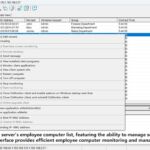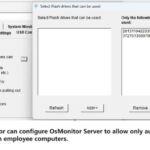The application and implementation of algorithms in a network behavior management system can encompass various aspects, including traffic management, security defense, Quality of Service (QoS), and user experience optimization. Below, I will introduce some common applications and implementation methods:
- Traffic Management: In a network behavior management system, traffic management is a crucial application area. Algorithms can be used to classify, throttle, optimize, and allocate network traffic to ensure the rational utilization of network resources. Common implementation methods include Deep Packet Inspection (DPI) based on traffic classification, token bucket algorithm, Leaky Bucket algorithm, etc.
- Security Defense: The application of algorithms in network security involves intrusion detection, DDoS attack defense, malicious traffic filtering, and more. These algorithms can analyze network traffic patterns, detect anomalies, and take corresponding defensive measures, such as intrusion detection systems based on machine learning, traffic filtering rules, etc.
- Quality of Service (QoS): QoS is an essential means of ensuring the allocation of network resources according to specific priorities in network behavior management. Algorithms can manage the priority of different types of traffic to ensure high-priority transmission of critical business. Algorithms include fair queue scheduling algorithms based on queuing theory, Differentiated Services (DiffServ), and more.
- Content Distribution and Optimization: Algorithms can be used in Content Delivery Networks (CDNs) to optimize the transmission path of content, reduce latency, and enhance user experience. Additionally, by analyzing user behavior, personalized content recommendations can be implemented to improve user satisfaction.
- Network Topology Optimization: In large-scale networks like data center networks, algorithm-based topology optimization can improve network scalability and performance. For example, using shortest path algorithms, topology adaptive algorithms, etc., to optimize routing and link selection within the network.
- Bandwidth Allocation and Adjustment: In network behavior management, algorithms can dynamically adjust bandwidth allocation based on changes in network load to ensure network performance for critical applications.
- Cache Optimization: Within cache systems, algorithms can implement cache content replacement strategies to improve cache hit rates, reduce access pressure on source servers, and accelerate content delivery.
- Intelligent Routing and Load Balancing: Algorithms can enable intelligent routing and load balancing, selecting the best paths and servers based on network status and resource load to enhance network availability and performance.
Implementing these applications often requires employing a variety of algorithms. These algorithms cover a wide range, including queuing theory, graph algorithms, dynamic programming, and more. Of course, when applying these algorithms to real-world scenarios, we must consider the practical network environment and actual requirements. Therefore, we need to design and implement these algorithms customarily to ensure their integration with real-world situations and maximize their utility.
About OsMonitor:
The mission of OsMonitor is to create a Windows computer system tailored for work purposes, effectively regulating employee computer behavior. It enables employers to understand what employees are doing each day, monitoring every action, including screen activity and internet usage. Additionally, it restricts employees from engaging in specific activities such as online shopping, gaming, and the use of USB drives.
OsMonitor, designed purely as software, is remarkably user-friendly and requires no additional hardware modifications. A single management machine can oversee all employee computers. As a leading brand in employee computer monitoring software with over a decade of successful operation, OsMonitor has rapidly captured the global market with its minimal file size and excellent cost-effectiveness compared to similar software. At this moment, thousands of business computers worldwide are running OsMonitor daily.


































